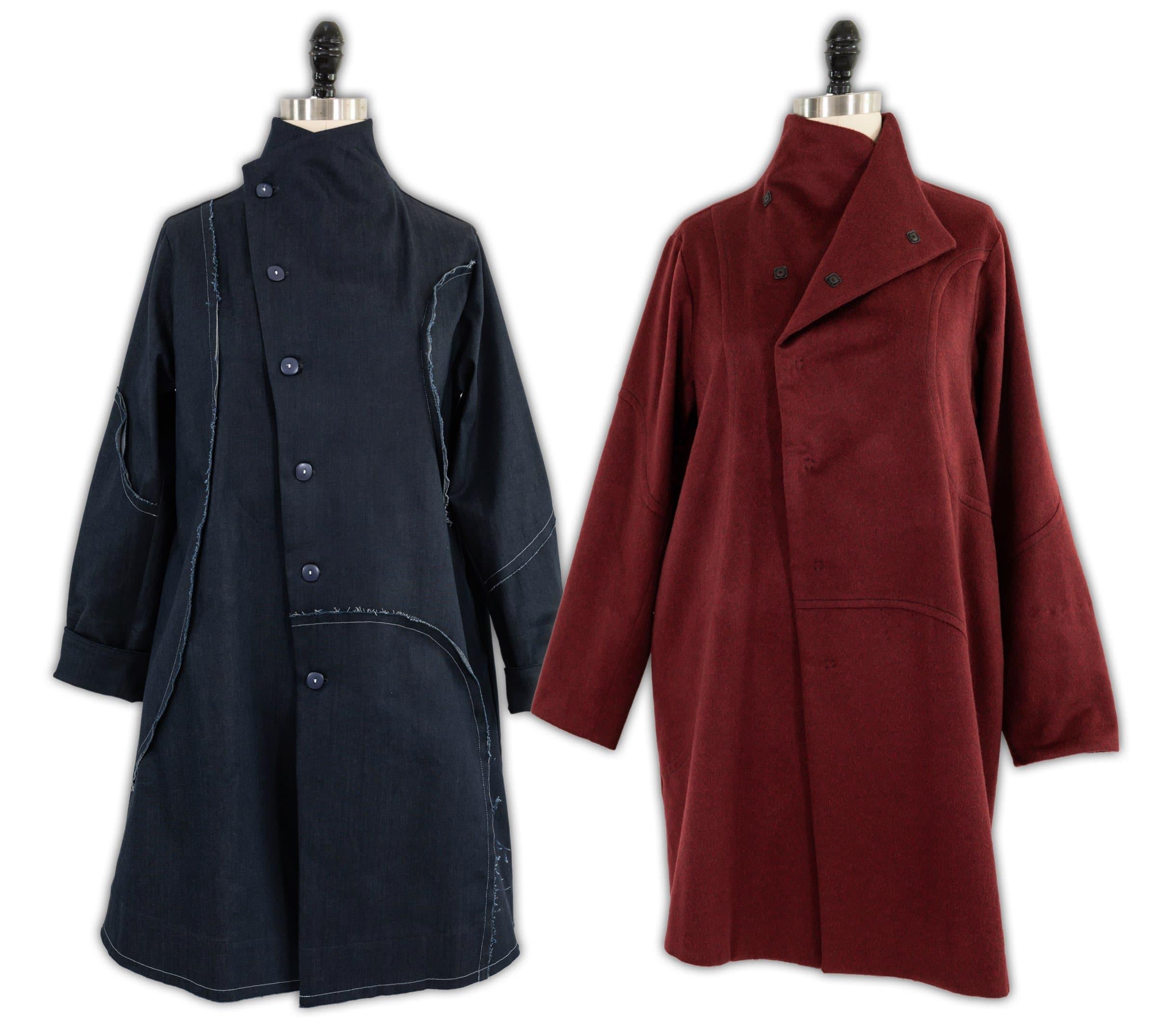Sculptural and versatile, this is a slightly oversized unlined coat to fancy up or kick back. The asymmetric style wears well open or closed, and will work in all seasons depending on your choice of fabric. The raw edged seams can be exposed to the outside offering a wabi sabi touch or sewn to the inside and topstitched for a more polished look.
The sewing is easy as long as you take the tight curves in the slow lane. Mark the matching points on the curves with tailor tacks. I use two strands of embroidery cotton floss in a contrasting color as it shows up easily. For either seam option, make some test samples with scraps to determine thread color, stitch length, pressing etc. I used machine topstitching, but it would be beautiful with hand stitching along the curves and edges and hem as well.
Tips for the exposed seam coat:
- Stitch with the wrong sides together.
- Decide if you want the stitching thread to be in a contrasting color.
- Test to consider how the fabric edges will ravel.
- Denim, linen, some wools and other stable woven fabrics will fray nicely as the coat is worn and/or washed.
- A gathering stitch or staystitch plus on the tight curves helps to match the seams precisely.
What you decide to do for closures depends on the fabric:
- Always a good idea to interface the buttonholes.
- A tightly woven fabric like denim will take machine buttonholes beautifully.
- A stretch woven should have a stable interfacing in the buttonholes.
- I struggled trying to stitch a decent buttonhole on the cashmere so I ended up used hand sewn snaps which worked well. They do require careful hand stitching (rest assured sometimes I do have to rip and resew).
- Whichever closure method you chose, test, test, test.
General tips:
- On the tight curves I add extra ‘notches’ and mark with tailor tacks to keep the seam lines aligned.
- I marked with pins but tailors tacks will work as well with exposed seams or clips work with classic seams.
- Machine baste the tight curves first in case you need to rip. (I did - both basting and ripping!).
- Stitch slowly.
- Press as you go.
- If you are using wool or cashmere use a press cloth and clapper. Well pressed seams will always give your sewing a professional look.
- The hem facing is important as it adds the weight needed for the coat to hang correctly.
- If your fabric is heavy, use a lighter weight fabric for the facing as well as the pocket.
Fabric options & tips:
- This style can take a heavy to lighter weight fabric, the important thing is to choose a fabric with some body or structure.
- Possibilities include denim, wool coating, cashmere, wool melton, linen, rainwear, ponte knits, brocade, taffeta, kantha, corduroy, velvet, velveteen.
- When using a heavy fabric cut the upper pocket from a thinner fabric to cut down on the bulk.
- Buttonholes are on the left front of the coat, keeping it gender neutral. If you want the buttonholes on the ‘right’ side simply reverse the pattern pieces before cutting and check to make sure they are the way you want them to work before stitching.
Happy sewing!











